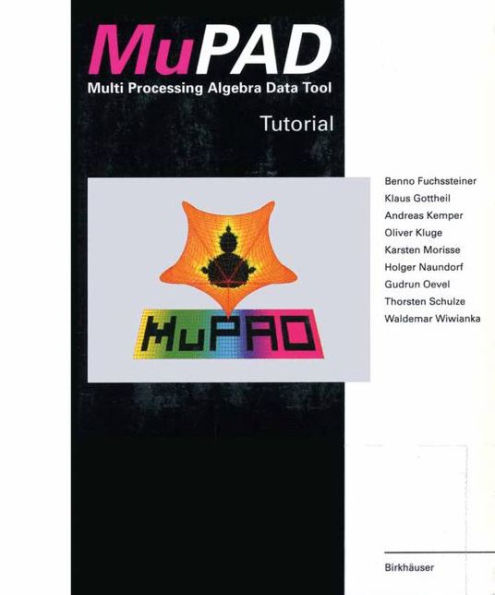MuPAD: Multi Processing Algebra Data Tool Tutorial MuPAD Version 1.2
MuPAD is a computer algebra project of the MathPAD group at the University of Paderborn. MuPAD was designed as a parallel system. The design and implementation of MuPAD grew out of the desire to efficiently handle large data generated by algorithms used to investigate the group theoretical structure of nonlinear systems. Nevertheless, MuPAD outgrew this original goal and was developed as a general purpose system and should be used as such. MuPAD had two major design goals. As already mentioned, firstly we wanted to prm·ide a tool for fast and efficient handling of large data. This goal was motivated by the special problems which came up in our research on nonlinear systems, where data of several GB are not unusual. As a consequence of this MuPAD is a parallel computer algebra system working on the basis of a shared memor)" machine. Special interfaces, simulating ~hared memory, will be provided for machines with a different architecture. A sequential version of MuPAD is available which, nevertheless, in its high-end language provides parallel constructs for programming. In this sequential version parallEl blocks are executed at random, thus allowing for logical tests of parallel programs on sequential machines. The sequential MuPAD version is the topic of this refErence manual. The second major design goal was to make sure that future versions of MuPAD could be the basis for a system capable of learning during interactive use.
1116358211
MuPAD: Multi Processing Algebra Data Tool Tutorial MuPAD Version 1.2
MuPAD is a computer algebra project of the MathPAD group at the University of Paderborn. MuPAD was designed as a parallel system. The design and implementation of MuPAD grew out of the desire to efficiently handle large data generated by algorithms used to investigate the group theoretical structure of nonlinear systems. Nevertheless, MuPAD outgrew this original goal and was developed as a general purpose system and should be used as such. MuPAD had two major design goals. As already mentioned, firstly we wanted to prm·ide a tool for fast and efficient handling of large data. This goal was motivated by the special problems which came up in our research on nonlinear systems, where data of several GB are not unusual. As a consequence of this MuPAD is a parallel computer algebra system working on the basis of a shared memor)" machine. Special interfaces, simulating ~hared memory, will be provided for machines with a different architecture. A sequential version of MuPAD is available which, nevertheless, in its high-end language provides parallel constructs for programming. In this sequential version parallEl blocks are executed at random, thus allowing for logical tests of parallel programs on sequential machines. The sequential MuPAD version is the topic of this refErence manual. The second major design goal was to make sure that future versions of MuPAD could be the basis for a system capable of learning during interactive use.
54.99
In Stock
5
1

MuPAD: Multi Processing Algebra Data Tool Tutorial MuPAD Version 1.2
199
MuPAD: Multi Processing Algebra Data Tool Tutorial MuPAD Version 1.2
199Paperback
$54.99
54.99
In Stock

Product Details
| ISBN-13: | 9783764350178 |
|---|---|
| Publisher: | Birkhäuser Basel |
| Publication date: | 03/01/1994 |
| Pages: | 199 |
| Product dimensions: | 6.69(w) x 9.61(h) x (d) |
From the B&N Reads Blog
